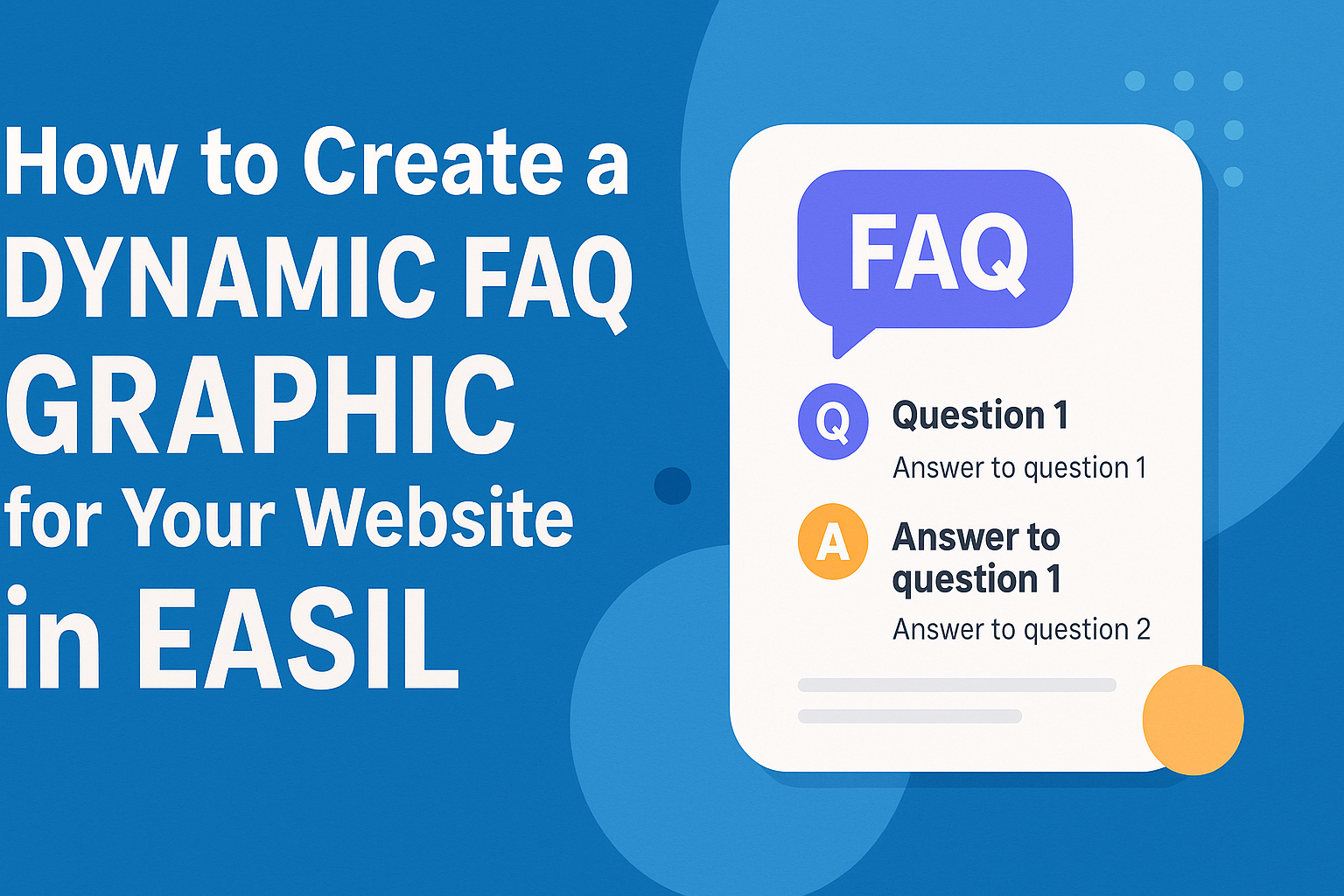Creating an engaging FAQ graphic for a website can boost user interaction and provide important information at a glance.
Using Easil, anyone can design a dynamic FAQ graphic that not only looks great but also effectively addresses customer questions. This process is simple, allowing users to make their websites more informative and user-friendly.
With the right tools, designing a visually appealing FAQ section becomes a fun project.
They can combine graphics and text to create an easy-to-navigate format that helps visitors find answers quickly. This enhances the overall user experience and builds trust with the audience.
In this blog post, readers will discover step-by-step instructions on making a standout FAQ graphic in Easil. From choosing templates to adding interactive elements, they will learn how to bring their FAQs to life while capturing the attention of site visitors.
Choosing the Right Tool for Your Dynamic FAQ Graphic
Selecting the best tool to create a dynamic FAQ graphic is crucial for achieving a professional look and functionality.
Easil offers several features that can enhance the design process, but it’s also beneficial to compare it with other platforms to ensure the best fit.
Assessing Easil’s Features
Easil has a user-friendly interface designed for ease of use, making it suitable for beginners and experienced designers alike. Its drag-and-drop functionality allows users to easily customize FAQ graphics without needing coding skills.
Key features of Easil include:
- Templates: A wide selection of pre-made templates simplifies the design process.
- Branding Tools: Users can easily apply brand colors, fonts, and logos.
- Collaboration Options: Team members can work together in real-time on designs.
Easil also offers options for exporting designs in various formats, which is handy for website integration.
Comparing Alternative Design Platforms
While Easil is a great choice, exploring alternatives can help users make the best decision. Platforms like Canva and Visme offer features that may appeal to different needs.
Canva is known for its vast library of stock photos and illustrations. It also provides collaborative tools similar to Easil.
Visme, on the other hand, emphasizes data visualization and interactive content. This might be useful if the FAQ graphic needs to include complex information.
When choosing a platform, users should consider factors like ease of use, available templates, and customer support. Each tool has unique advantages, making research essential for the best choice.
Designing Your FAQ Graphic
Creating a dynamic FAQ graphic involves choosing the right template, customizing design elements effectively, and incorporating branding. Each step is crucial for ensuring the graphic is engaging and informative.
Selecting a Template
Choosing a template is the first step in designing an FAQ graphic. Easil offers a variety of templates tailored for FAQs. Look for a layout that is visually appealing and suits the website’s theme.
Focus on templates that make use of clear headings and ample space for text. This helps keep the information organized and easy to read. Users should quickly find the answers to their questions.
Consider the layout that best fits your content style. A grid format works well for multiple questions, while a single-column layout might be ideal for in-depth responses.
Customizing the Design Elements
Once the template is chosen, it’s time to customize design elements. Colors, fonts, and icons should align with the website’s style. This ensures that the graphic feels cohesive with the overall branding.
Utilize bold headings to separate questions and provide enough spacing between each section. This makes the FAQ easier to navigate.
For added interest, use graphics or icons that relate to the questions. Simple visuals can break up text and draw attention to key points.
Remember to keep it clean and uncluttered. Overly complicated designs can distract users from finding the information they need.
Incorporating Branding
Incorporating branding is essential for creating a unified look. Add the company logo prominently on the FAQ graphic. This promotes brand recognition and trust.
Choose a color palette that reflects the brand’s identity. Consistent use of colors across all materials strengthens brand presence.
Text should use the same fonts as the website for consistency. This ties the graphic back to the overall design of the site, providing a seamless experience for users.
Finally, ensure that the tone of the text matches the brand’s voice. Whether it’s formal, friendly, or playful, keeping a consistent tone helps relate to the audience effectively.
Animating Your FAQ for Dynamic Interaction
Creating an engaging and interactive FAQ section helps users find answers quickly and keeps them on the website longer. Two effective ways to achieve this are through hover effects and expand/collapse functions.
Adding Hover Effects
Hover effects can make an FAQ section visually appealing and user-friendly. When users hover over a question, a subtle change can draw attention. For example, the question text might change color or the background could slightly brighten.
To implement this in Easil, select the FAQ element and choose a hover interaction. Set options like color changes or animations for a smooth transition. Using CSS, a simple rule such as:
.question:hover {
background-color: #f0f0f0;
color: #333;
}
can make the FAQ section more interactive. This encourages users to engage with the content as they explore their questions.
Using Expand/Collapse Functions
Expand/collapse features effectively save space in an FAQ section while allowing users to dive deeper into each question.
When a user clicks on a question, the answer can smoothly slide down, revealing the text.
In Easil, users can create this function by linking questions to hidden answer elements.
A simple script might automate this, ensuring only one answer displays at a time. This avoids overwhelming the reader with too much text at once.
Such interactivity provides a cleaner look and allows users to focus on the questions they care about.
By utilizing these techniques, an FAQ section becomes not only informative but also enjoyable to navigate.

